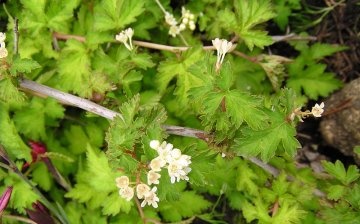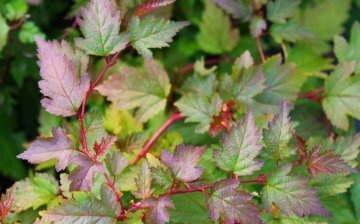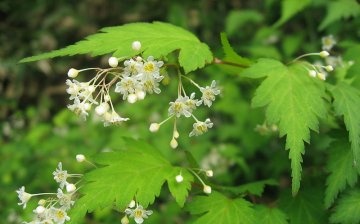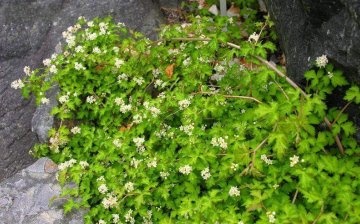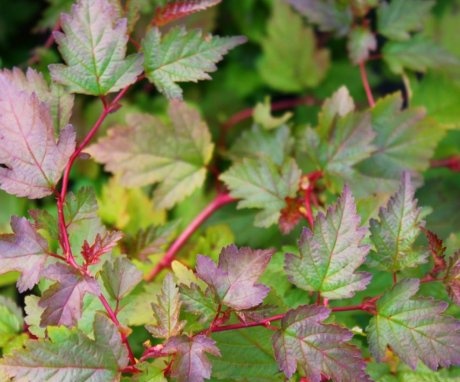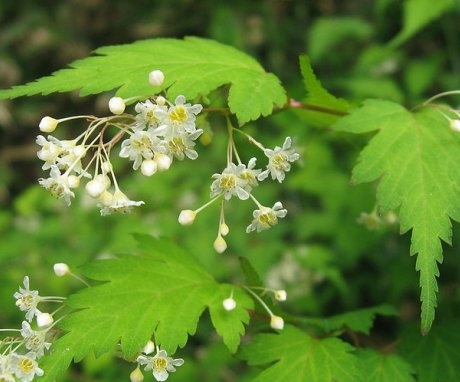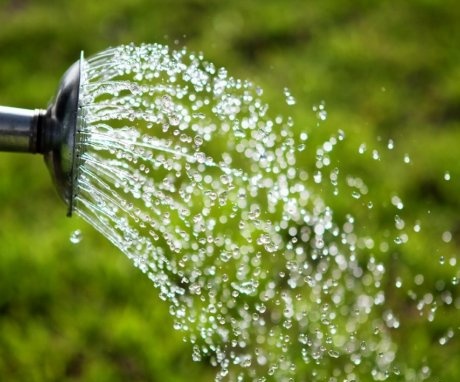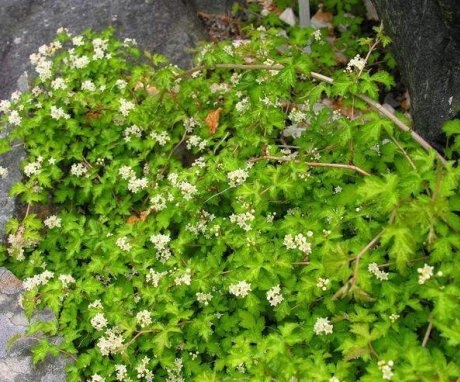Stefanandra notched-leaved - flowering shrub for the garden
Small flowering shrubs with an unusual shape, the crowns are especially good for the design of the infield. And such interesting specimens can be found in the gardens of Japan and Korea.
Stefanandra attracts the garden at any time of the year. In spring, its lush foliage is tender and delicate. In summer - the abundance of flowers beckons with the luxury of the crown and an amazing aroma, slightly weak, but bewitching. In autumn, the bush contrasts with other plants with its bright orange or reddish-brown foliage cap.
Content:
- Description of stefanandra incised leaf
- Shrub propagation methods, planting rules
- Plant care tips
- The use of shrubs in landscape design
Description of stefanandra incised leaf
The height of the ornamental shrub is small, from sixty to eighty centimeters, but the lush crown reaches two meters in diameter. Such a huge pillow of intertwined, beautifully curved branches gives the plant a picturesque look.
Light green leaves with deep dissection complement the beauty.
They are slightly wavy along the edge with a slightly wrinkled plate surface. Their arrangement on the branches in different planes creates an openwork fabric of the bush crown.
At the end of spring, the stefanandra incised-leaved plant is covered with small flowers, collected in white panicles. Within a month, the bushes delight with their tenderness, the aroma of flowering. In the middle of summer, fruits are formed in place of the inflorescences. In autumn, the leaves acquire a reddish-orange tone, and then fall off, and the shrub already meets the winter without openwork foliage. The beauty of the shrub makes it a garden favorite among other ornamental plants.
Shrub propagation methods, planting rules
Usually, the shoots of Stefanandra, creeping near the ground, root themselves perfectly, creating a lush carpet of foliage. But this can harm the garden, so a person must intervene in the breeding process to avoid chaos in planting.
There are two ways to help you breed a shrub:
- Seeds for growing ornamental species can be purchased at a specialized store. They are planted in the ground in early spring. And after a month you can already have small sprouts. Rooted shoots are transplanted to a permanent place. The plant takes root quickly, but it must be well covered for the winter.
- Reproduction by summer semi-lignified cuttings is also easy with one hundred percent result. The planting hole is prepared with soil neutral in acidity by mixing peat with compost, leafy ground. A drainage layer will be necessary if the site is dominated by heavy clay soils. The distance between the lush bushes of Stephanandra notched-leaved should be at least two to three meters.
The best place in the garden for a deciduous plant is an area on the sunny side, without cold winds, drafts. In some cases, partial shade is also suitable. Reproduction of the plant is easy, it is similar to the character of this rare plant.
Plant care tips
It is always pleasant to look after an oriental beauty, but Stephanandra is not capricious yet:
- Glaze the plant requires a rare and abundant one.In the summer, it is necessary to moisten it two or three times a week, up to two buckets of water are poured under each bush. Less often after flowering.
- To preserve moisture, it is good to mulch the plant's trunk circles with chips and peat in a layer of five to ten centimeters.
- Top dressing the beauty is also necessary, and for this, complexes for flowering shrubs are suitable. Organic fertilizers in the form of slurry will also help keep your garden darling healthy. But there should be no excess in fertilizers, otherwise the flowering of the plant will stop, it will give all its strength to the greens.
- Weeding weeds around shrubs should be carried out as soon as they appear. At the same time, the soil is loosened to a depth of ten centimeters.
- In autumn and spring, you can cut dry and damaged branches of Stephanandra notched-leaved.
- Shelter for the winter shrub is required. For this, the branches are bent tightly to the ground, covering them with a mixture of earth with peat, fallen leaves.
Ease of care is especially appreciated in the plant.
The use of shrubs in landscape design
Designers appreciated the properties of Stefanandra and found a use for it.
- It looks especially good in the foreground for padding groups of trees and shrubs.
- Beautiful flowering shrub on the hills, in the middle of the garden hills or in the center of greenery lawn.
- It is recommended to use the slopes and shores of reservoirs for planting ground cover shrubs. In addition to making them picturesque, the plant will perfectly strengthen them, save them from erosion.
- Huge pillows of a flowering plant look good next to other soil-based species, such as Cossack juniper, mountain pine.
- Planted surrounded by boulders, stone compositions, they will look great.
- The decoration of the curbs with Stephanandra along the paths and stairs is highly effective.
- For an alpine slide, a flowering shrub is irreplaceable; it will emphasize the beauty of annual flowers or perennials. And in autumn, bright foliage will remind of summer for a long time.
- Many people use a small shrub for the area along the fence, both on and off the site. This will free you from the problems of cleaning this area from weeds.
There are many options for using a plant for decorating a garden, and here you need imagination, a sense of beauty and such a plant as Stephanandra cutleaf.
More information can be found in the video:



